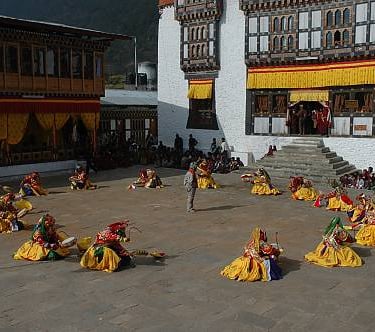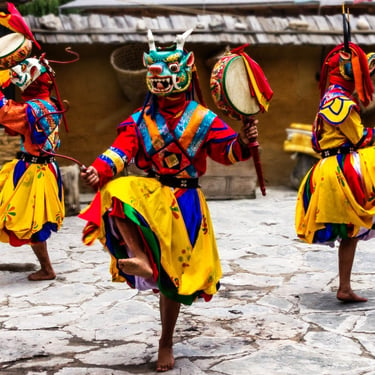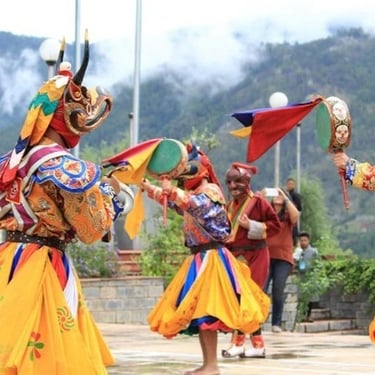Drametse Ngacham, the revered mask dance, is performed twice a year in Drametse village, located in eastern Bhutan. Recognized as one of the most symbolic and sacred religious dances in the country, it is organized by the Ogyen Tegchok Namdroel Choeling Monastery. The dance is a central part of the Drametse festival, held in honor of Guru Rinpoche (Padmasambhava, 747 AD), the great spiritual master who introduced Buddhism to Bhutan.
Believed to be performed by celestial beings, the dance of drums has deep spiritual roots. According to historical accounts, Kuenga Gyaltshen, the son of the great treasure revealer Terton Pema Lingpa (1450–1521), had a vision in which he visited Guru Rinpoche’s copper-colored palace and witnessed a divine dance performed by spiritual beings. Upon returning to his senses, he vividly recalled the customs, choreography, and movements of the dance. Recognizing its spiritual significance and liberating power, he transcribed its details and instituted it in Drametse, thus giving rise to the renowned "Drum Dance of Drametse."
The original performance consists of sixteen dancers, though the number may vary based on the availability of trained participants. Each dancer wears elaborate silk costumes, holds a drum, and dons a mask representing real and mythical animals such as the snow lion, garuda (celestial bird), dragon, yak, leopard, goat, snake, raven, horse, owl, stag, dog, bear, tiger, and ox. The dance lasts approximately two hours, with all performers undergoing rigorous training in meditation and visualization according to Vajrayana Buddhist principles. Additionally, they must receive formal authorization and initiation before they can participate.
For spectators, witnessing the Drametse Ngacham is considered a profound artistic and spiritual experience. Merely watching the dance is believed to awaken the divine potential within an individual, as the performers embody celestial beings. It is also thought to have religious power, dispelling evil spirits while bestowing blessings and good health. The local community firmly believes that watching Drametse Ngacham at least once in a lifetime helps ease one’s journey after death.
Beyond Bhutan, the dance holds cultural and spiritual significance worldwide. In 2005, UNESCO inscribed Drametse Ngacham as an Intangible Cultural Heritage, making it the first and only cultural tradition from Bhutan to receive this honor. This recognition ensures the preservation of the sacred dance for future generations, safeguarding its legacy as a vital part of Bhutanese heritage.





